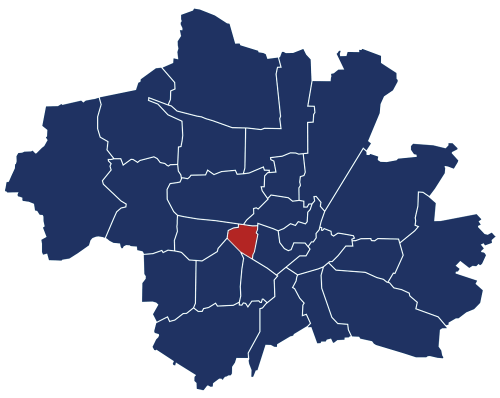Schwanthalerhöhe
Historical Background
Schwanthalerhöhe was named after the sculptor Ludwig von Schwanthaler, who created the Bavaria statue. The district emerged during the industrialization period around 1840 and was then a simple working-class neighborhood. Due to the poor building structure, extensive renovations were carried out in the 1970s, which led to a change in the district’s economic structure.
Location
Schwanthalerhöhe forms the western edge of Munich’s city center and is bordered by the railway lines from the main station to Pasing and to the East Station. The district extends to Theresienwiese in the east and is enclosed by additional railway lines to the south, north, and west. The U4 and U5 subway lines run through the neighborhood.
Population
With a population density of 141 per hectare, Schwanthalerhöhe has the second-highest density in Munich. The proportion of foreign nationals is also the second-highest in the city. About three-quarters of the population are of working age, while the share of families with children is below average. A high proportion of households consists of single-person households.
Schwanthalerhöhe today
Schwanthalerhöhe is a typical urban neighborhood with heavy traffic and limited open space. Cooperative housing developments from the 19th century shape the district’s appearance. The area underwent transformation following the relocation of Messe München to Riem, resulting in the creation of a new urban quarter with housing, schools, and workplaces. Theresienhöhe, featuring over 300 subsidized apartments, is another key residential project.
Significant Buildings and Notable Places
The landmark of Schwanthalerhöhe is the Theresienwiese, best known for hosting the Oktoberfest. Other significant sites include the Hall of Fame (Ruhmeshalle), the Bavariapark, the Steidle residential tower, and numerous other monuments and historic buildings.
Age Structure in Schwanthalerhöhe
The largest share of the population in Schwanthalerhöhe falls within the 15 to under 45 age group, which saw an increase of 901 people between 2007 and 2008. Children under the age of 6 make up a smaller portion of the population.

Age Structure of Schwanthalerhöhe
Numbers and Facts
- Area: 209.06 hectares
- Population: 29,402
- Population density: 142 per hectare




